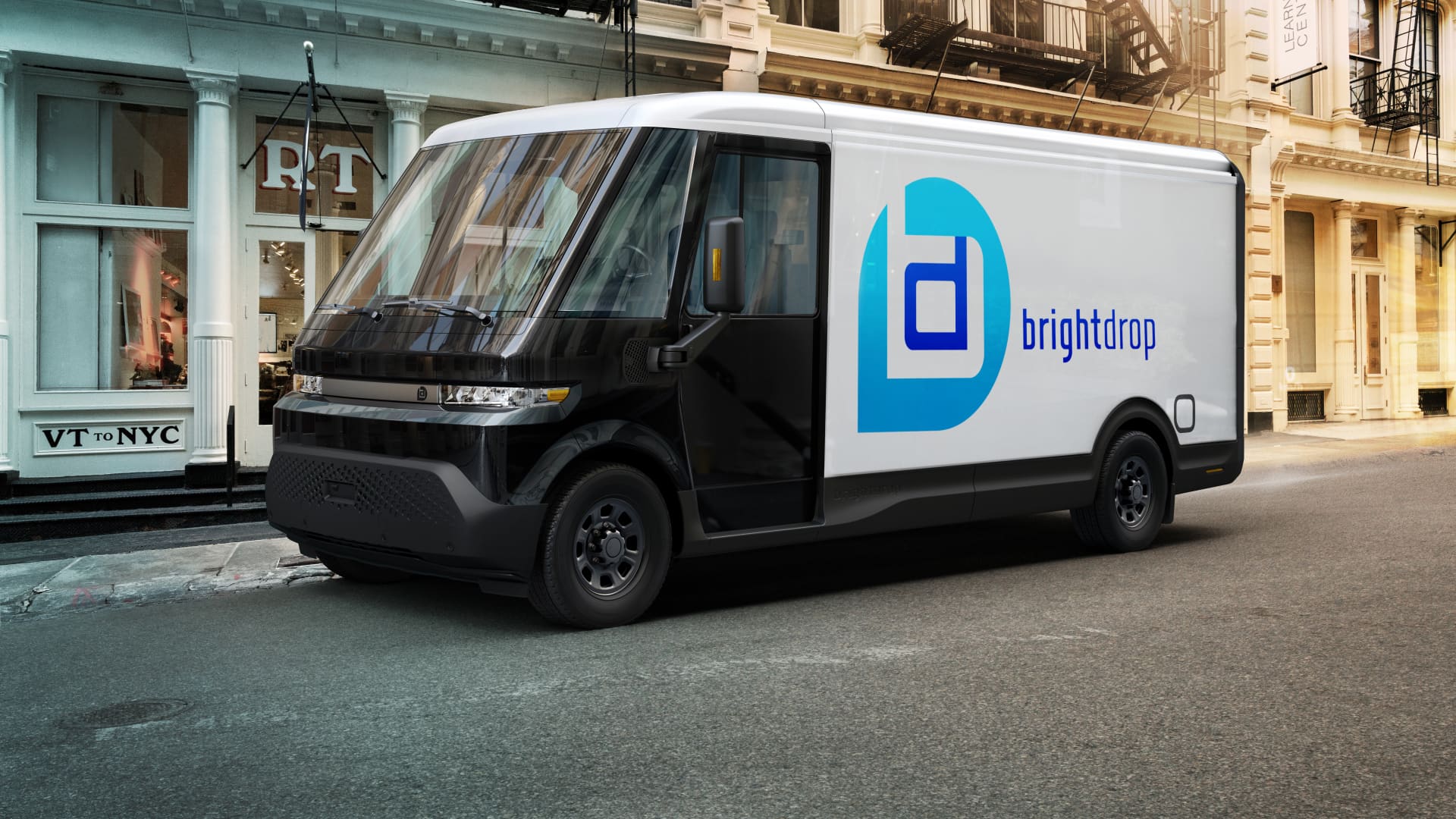Brightdrop EV600 van
Source: Brightdrop
DETROIT — General Motors is cutting production of its all-electric BrightDrop delivery vans at a plant in Canada and will idle the facility through much of 2025, the company confirmed Friday.
The CAMI assembly plant in Ingersoll, Ontario, will be reduced from two shifts to one — eliminating 500 jobs — after being idled beginning in May for roughly 20 weeks until October, the company said. Battery pack assembly at the plant also will be down the weeks of April 21 and April 28, ahead of the prolonged shutdown, GM said.
The Detroit automaker said the decisions are not related to President Donald Trump’s tariffs.
“This adjustment is directly related to responding to market demand and re-balancing inventory,” GM said in an emailed statement. “Production of BrightDrop and EV battery assembly will remain at CAMI.”
Lana Payne, president of Canadian union Unifor, which represents workers at the plant, described the actions as a “crushing blow to hundreds of working families in Ingersoll and the surrounding region who depend on this plant.”
“General Motors must do everything in its power to mitigate job loss during this downturn, and all levels of government must step up to support Canadian auto workers and Canadian-made products,” Payne said in a release.
GM launched BrightDrop as a fully owned subsidiary in 2021, before folding it into the company’s fleet business in 2023. It then folded BrightDrop into its Chevrolet brand in 2024.
BrightDrop electric delivery vans are parked near General Motors BrightDrop unit’s CAMI EV Assembly, Canada’s first full-scale electric vehicle manufacturing plant, in Ingersoll, Ontario, Canada, March 13, 2025.
Carlos Osorio | Reuters
GM had high expectations of making BrightDrop into a new, lucrative growth business for the automaker, but sales and revenue did not meet the company’s initial expectations.
BrightDrop was expected to generate $1 billion in revenue in 2023. GM declined to disclose BrightDrop’s revenue, but it’s highly unlikely the target was achieved.
In 2023 and 2024, the automaker sold only about 2,000 of the electric vans, according to its sales reports.
The plans for the idling come weeks after a Detroit Free Press report said hundreds of BrightDrop vehicles were lining a storage lot in Flint, Michigan.
Unifor said while GM “has indicated it remains committed to the CAMI facility, with upgrades for the 2026 model year, the immediate future remains uncertain without stronger domestic support and fair market access,” citing Trump’s tariffs.
“The reality is the U.S. is creating industry turmoil. Trump’s short-sighted tariffs and rejection of EV technology is disrupting investment and freezing future order projections,” Payne said. “This is creating an opening for China and other foreign automakers to dominate the global EV market while the North America industry risks falling behind.”
Correction: Battery pack assembly at the plant will be down the weeks of April 21 and April 28. A previous version of this article misstated a date.






